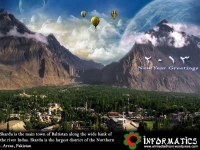CHALLENGE
In 1566, Ottoman architect Mimar Hajrudin built a stone bridge that spanned the waters of the Neretva River and came to be known as “Stari Most,” or Old Bridge. Initially a small Turkish outpost, this city continued to grow, and was eventually named Mostar, or “keeper of the bridge.” The bridge became a symbol of Bosnia and Herzegovina’s tolerance in a region known for its ethnic and religious diversity–until war overwhelmed the former Yugoslavia. On November 9 1993, artillery and tanks destroyed this cultural treasure. Following the conclusion of the war, the Government tried for several years to rebuild the bridge. However, due to lack of financing and technical capacity, as well as prevailing political and ethnic sensitivities, all efforts were unsuccessful
PARTNERS
The Government provided US$2 million, with other donors, including Italy, the Netherlands, Croatia, and the Council of Europe Development Bank, providing the rest. Also contributing were UNESCO, the World Monuments Fund, and the Aga Khan Trust for Culture.
NEXT STEPS
Although IDA financing ended several years ago, project activities go on, since local authorities are continuing to work on the restoration and maintenance of the Old Town. The project implementation unit has been transformed into an agency responsible for managing and maintaining the restored Old Town, and further developing Mostar’s tourism potential.
Source: Relief Web



Pingback: Bosnia and Herzegovina: Bridges for peace « The Ismaili News | Bosnia today